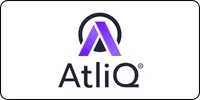Microsoft Azure SQL Administering Solutions







Microsoft Azure SQL Administering Solutions Certification course
What will I learn?
- Learn how to deploy and configure Azure SQL databases and data solutions.
- Develop skills in backup and recovery, high availability, and disaster recovery for Azure SQL databases.
- Gain proficiency in managing and monitoring Azure SQL databases for performance and reliability.
- Prepare for the DP-300 certification exam through hands-on labs and practice exams.
Requirements
- Basic understanding of Microsoft Azure fundamentals and cloud computing concepts.
- Familiarity with SQL Server administration and database concepts is beneficial but not required.
Microsoft Azure SQL Administering Solutions Course Content
- Introduction to Azure SQL Solutions
- Overview of Azure SQL offerings, including Azure SQL Database, Azure SQL Managed Instance, and Azure SQL Virtual Machine.
- Understanding the benefits of Azure SQL solutions compared to traditional on-premises databases.
- Deploying and Provisioning Azure SQL Solutions
- Planning and provisioning Azure SQL Database instances.
- Deploying Azure SQL Managed Instances and configuring networking settings.
- Deploying Azure SQL Virtual Machines and configuring storage options.
- Managing Azure SQL Databases
- Configuring database settings, including collation, compatibility level, and database properties.
- Managing database files and filegroups in Azure SQL Database.
- Monitoring database performance and resource utilization.
- Securing Azure SQL Solutions
- Implementing authentication and authorization mechanisms in Azure SQL.
- Configuring firewall rules and virtual network integration for secure access.
- Encrypting data at rest and in transit using Transparent Data Encryption (TDE) and SSL/TLS encryption
- Monitoring and Troubleshooting Azure SQL Solutions
- Monitoring database health and performance using Azure Monitor and Dynamic Management Views (DMVs).
- Identifying and resolving performance bottlenecks and resource contention issues.
- Troubleshooting common errors and connectivity issues in Azure SQL solutions.
- Backup and Restore Strategies
- Implementing backup and restore strategies for Azure SQL Database and Azure SQL Managed Instance.
- Configuring long-term retention backups and geo-replication for disaster recovery.
- Performing point-in-time restores and database copy operations.
- High Availability and Disaster Recovery
- Implementing high availability solutions such as Always On availability groups and failover groups.
- Configuring automatic failover and failover policies for business continuity.
- Planning and testing disaster recovery scenarios for Azure SQL solutions.
- Automation and Scripting
- Automating administrative tasks using Azure Automation and PowerShell scripts.
- Creating runbooks for common maintenance tasks such as backup, restore, and database provisioning.
- Using Azure CLI and Azure Resource Manager (ARM) templates for infrastructure as code (IaC).
- Scaling up and down Azure
- SQL Database and Azure SQL Managed Instance resources.
- Implementing auto-scaling based on workload patterns and performance metrics.
- Managing database workloads and resource governance in multi-tenant environments.
- Migration to Azure SQL Solutions
- Planning and executing database migration projects from on-premises databases to Azure SQL solutions.
- Using Azure Database Migration Service (DMS) for online and offline migrations.
- Assessing compatibility issues and optimizing database performance post-migration.
- Cost Management and Optimization
- Monitoring and optimizing costs associated with Azure SQL solutions.
- Implementing cost-saving strategies such as reserved capacity, serverless compute, and auto-pausing.
- Analyzing usage patterns and rightsizing resources for optimal performance and cost-efficiency.
- Compliance and Governance:
- Ensuring compliance with industry standards and regulatory requirements (e.g., GDPR, HIPAA).
- Implementing data protection features such as data masking, row-level security, and auditing.
- Enforcing governance policies for access control, data classification, and data retention.
- Provision Azure SQL Database
- Using the Azure Portal, provision a new Azure SQL Database instance.
- Configure the database settings including collation, compatibility level, and pricing tier.
- Take note of the server name, database name, and login credentials for future tasks.
- Configure Firewall Rules
- Set up firewall rules to allow access to the Azure SQL Database instance from your local machine or a specific IP address range.
- Verify connectivity by connecting to the database using SQL Server Management Studio (SSMS) or Azure Data Studio.
- Enable Threat Detection
- Enable Threat Detection for the Azure SQL Database instance to detect and respond to potential threats.
- Configure email notifications for security alerts and specify the severity level thresholds.
- Perform Database Backup
- Configure automated backups for the Azure SQL Database instance to create regular backups.
- Verify that backups are being created according to the configured schedule.
- Perform a manual backup of the database using the Azure Portal or T-SQL commands.
- Monitor Performance Metrics
- Use Azure Monitor to monitor performance metrics such as CPU usage, storage utilization, and query performance.
- Set up alerts for specific performance thresholds and configure notification channels (e.g., email, SMS).
- Implement Row-Level Security
- Create a sample database table containing sensitive data (e.g., customer information).
- Implement row-level security policies to restrict access to sensitive data based on user roles or attributes.
- Test the row-level security policies by querying the database with different user identities.
- Configure Transparent Data Encryption (TDE)
- Enable Transparent Data Encryption (TDE) for the Azure SQL Database instance to encrypt data at rest.
- Verify that TDE is enabled and that the database files are encrypted using the Azure Portal or T-SQL commands.
- Implement Azure SQL Managed Instance
- Provision an Azure SQL Managed Instance in your Azure subscription.
- Migrate an existing on-premises database or an Azure SQL Database to the managed instance using Azure Database Migration Service (DMS).
- Verify that the database is successfully migrated and accessible from the managed instance.
- Configure Automatic Tuning
- Enable Automatic Tuning for the Azure SQL Database instance to allow automatic performance optimization.
- Monitor query performance and observe how Automatic Tuning adjusts indexes and query plans to improve performance.
- Review Audit Logs
- Enable auditing for the Azure SQL Database instance to track database activities and changes.
- Review audit logs to identify unauthorized access attempts, data modifications, and other security events.
Get in touch
400+ Global Employment Partners







































Why Choose Microsoft Azure SQL Administering Certification Course from Bright Computer Education?

Designed Curriculum
Our curriculum covers everything from basic to advanced topics. Topics include variables, data types, control structures, functions, OOP, STL, and more.

Hands-on Learning
Dive into practical exercises and coding projects that reinforce learning and help you build real-world applications.

Experienced Instructors
Learn from industry experts with years of experience in C programming and software development.
Flexible Learning
Choose from flexible scheduling options, including self-paced learning or live virtual classes to fit your busy lifestyle.
Career Development
Gain valuable skills sought after by employers in various industries, from software development to embedded systems and beyond.
Interactive Learning
Engage with fellow learners and instructors through live Q&A sessions, discussion forums, and collaborative coding exercises.
Diverse Career Opportunities in Microsoft Azure SQL Administering: Exploring Paths in India's Technology Sector
Frequently Asked Questions
Recently View Courses
Course Details Curriculum Placement FAQ’s Designing and implementing Microsoft DevOps Solution certification course The...
Read MoreCourse Details Curriculum Placement FAQ’s Designing Microsoft Azure Infrastructure Solutions certification course The AZ-305T00:...
Read MoreCourse Details Curriculum Placement FAQ’s Microsoft Power BI Data Analyst Certification course Start your...
Read More
